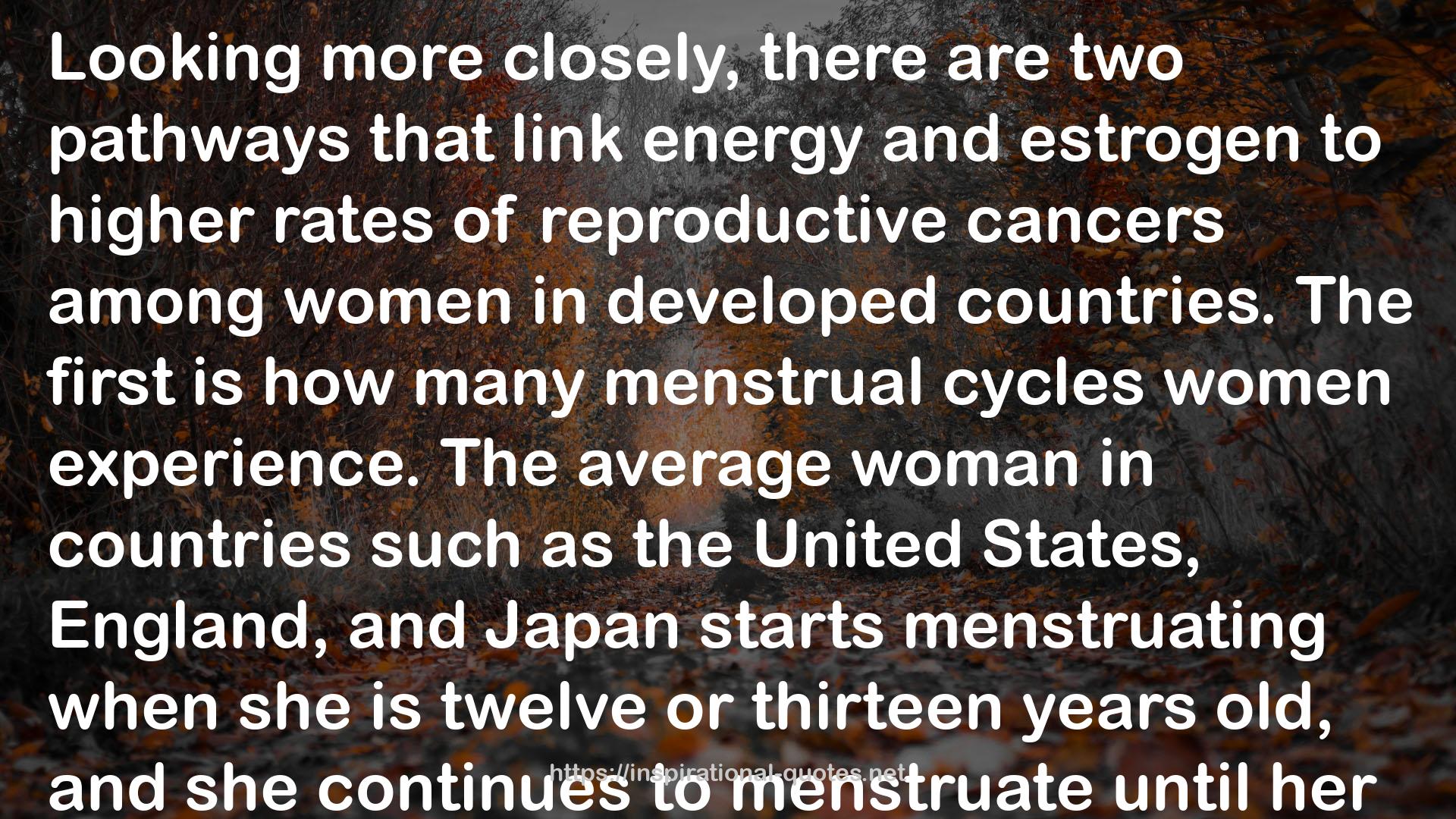" Looking more closely, there are two pathways that link energy and estrogen to higher rates of reproductive cancers among women in developed countries. The first is how many menstrual cycles women experience. The average woman in countries such as the United States, England, and Japan starts menstruating when she is twelve or thirteen years old, and she continues to menstruate until her early fifties. Because she has access to birth control, she gets pregnant only once or twice over her lifetime. Further, after she gives birth, she probably breast-feeds her babies for less than a year. All told, she can expect to experience approximately 350 to 400 menstrual cycles during her life. In contrast, a typical hunter-gatherer woman starts menstruating when she is sixteen, and she spends the majority of her adult life either pregnant or nursing, often struggling to get enough energy to do so. She thus experiences a total of only about 150 menstrual cycles. Since each cycle floods a woman’s body with powerful hormones, it is not surprising that reproductive cancer rates have multiplied in recent generations as birth control and affluence has spread. The other key pathway that links chronic positive energy balances with reproductive cancers among women is through fat. Earlier, "
― Daniel E. Lieberman , The Story of the Human Body: Evolution, Health, and Disease
